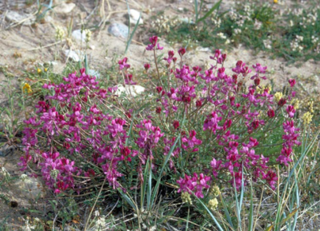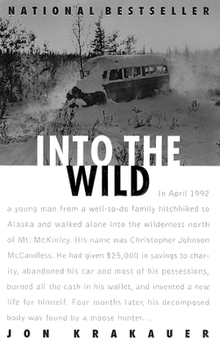
The Denali Borough is a borough located in the U.S. state of Alaska. As of the 2020 census the population of the borough was 1,619, down from 1,826 in 2010. The borough seat and most populated community is Healy, and its only incorporated place is Anderson. The borough was incorporated in December 1990.

Denali National Park and Preserve, formerly known as Mount McKinley National Park, is a United States national park and preserve located in Interior Alaska, centered on Denali, the highest mountain in North America. The park and contiguous preserve encompass 6,045,153 acres which is larger than the state of New Hampshire. On December 2, 1980, 2,146,580-acre Denali Wilderness was established within the park. Denali's landscape is a mix of forest at the lowest elevations, including deciduous taiga, with tundra at middle elevations, and glaciers, snow, and bare rock at the highest elevations. The longest glacier is the Kahiltna Glacier. Wintertime activities include dog sledding, cross-country skiing, and snowmobiling. The park received 594,660 recreational visitors in 2018.

Jon Krakauer is an American writer and mountaineer. He is the author of bestselling non-fiction books—Into the Wild; Into Thin Air; Under the Banner of Heaven; and Where Men Win Glory: The Odyssey of Pat Tillman—as well as numerous magazine articles. He was a member of an ill-fated expedition to summit Mount Everest in 1996, one of the deadliest disasters in the history of climbing Everest.

Christopher Johnson McCandless, also known by his pseudonym "Alexander Supertramp", was an American adventurer who sought an increasingly nomadic lifestyle as he grew up. McCandless is the subject of Into the Wild, a nonfiction book by Jon Krakauer that was later made into a full-length feature film.
Neurolathyrism, is a neurological disease of humans, caused by eating certain legumes of the genus Lathyrus. This disease is mainly associated with the consumption of Lathyrus sativus and to a lesser degree with Lathyrus cicera, Lathyrus ochrus and Lathyrus clymenum containing the toxin ODAP.

Mount Hunter or Begguya is a mountain in Denali National Park in Alaska. It is approximately eight miles (13 km) south of Denali, the highest peak in North America. "Begguya" means child in the Dena'ina language. Mount Hunter is the third-highest major peak in the Alaska Range.

Timothy Treadwell was an American bear enthusiast, environmentalist, documentary filmmaker, and founder of the bear-protection organization Grizzly People. He lived among coastal brown bears in Katmai National Park, Alaska, for 13 summers.

L-(+)-(S)-Canavanine is a non-proteinogenic amino acid found in certain leguminous plants. It is structurally related to the proteinogenic α-amino acid L-arginine, the sole difference being the replacement of a methylene bridge (-CH
2- unit) in arginine with an oxa group (i.e., an oxygen atom) in canavanine. Canavanine is accumulated primarily in the seeds of the organisms which produce it, where it serves both as a highly deleterious defensive compound against herbivores (due to cells mistaking it for arginine) and a vital source of nitrogen for the growing embryo. The related L-canaline is similar to ornithine.
The Stampede Trail is a remote road and trail located in the Denali Borough in the U.S. state of Alaska. Apart from a paved or maintained gravel road for 8 miles (13 km) between Eight Mile Lake and the trail's eastern end, the route consists of a primitive and at times dangerous hiking or ATV trail following the path of the original road, which has deteriorated over the years. The route ends at an abandoned antimony mine at 63.740739°N 150.379229°W along Stampede Creek, a couple miles past Stampede Airport's grass airstrip.
Everett Ruess was an American artist, poet, and writer. He carried out solo explorations of the High Sierra, the California coast, and the deserts of the American Southwest. In 1934, he disappeared while traveling through a remote area of Utah; his fate remains unknown.

Hedysarum (sweetvetch) is a genus of the botanical family Fabaceae, consisting of about 200 species of annual or perennial herbs found in Asia, Europe, North Africa, and North America.

Into the Wild is a 2007 American biographical adventure drama film written, co-produced, and directed by Sean Penn. It is an adaptation of the 1996 non-fiction book of the same name written by Jon Krakauer and tells the story of Christopher McCandless, a man who hiked across North America into the Alaskan wilderness in the early 1990s. The film stars Emile Hirsch as McCandless, Marcia Gay Harden as his mother, William Hurt as his father, Jena Malone, Catherine Keener, Brian H. Dierker, Vince Vaughn, Kristen Stewart, and Hal Holbrook.
The Teklanika River is a 91-mile (146 km) tributary of the Nenana River in the U.S. state of Alaska. The Nenana is a tributary of the Tanana River, which is part of the Yukon River drainage in the central interior region of the state. Flowing northward from headwaters at the Cantwell Glacier in the Alaska Range, the Teklanika drains an area widely visited by tourists to Denali National Park and Preserve. The park's only road crosses the river at milepost 31 and a National Park campground is located on its eastern bank at milepost 29.

The University of Alaska Museum of the North (UAMN) is a cultural and historical museum on the University of Alaska Fairbanks campus.

The Call of the Wild is a 2007 documentary film by the independent filmmaker Ron Lamothe. The premise details the odyssey of Christopher McCandless as Lamothe takes a road trip across North America to the places McCandless visited. Within the film, Lamothe reaches conclusions about McCandless' death which contradict both Sean Penn's film Into the Wild (2007) and Jon Krakauer's book Into the Wild (1996), on which Penn's film was based.
Ed Wardle is a Scottish television producer, director, camera operator, and adventurer.

The Eskimo potato is a type of edible plant that grows in the northern areas of Canada and Alaska. The plant's scientific name is variously attributed as either Claytonia tuberosa or Hedysarum alpinum. Both species have a range in the northern area of North America, have edible roots, and have been documented to have been used as a food source by Inuit. Due to its nutritional qualities, the eskimo potato is one of many edible foods listed in survival guides, such as the US Army's field manual Survival, and is used in modern times to subsist in nature.
Into the Wild may refer to:

Hedysarum alpinum is a species of flowering plant in the legume family known by the common name alpine sweetvetch. It is called masu, masru or mazu in the Iñupiaq language. It has a circumpolar distribution, occurring throughout the northern latitudes of the Northern Hemisphere. In North America it is widespread in Canada and the northernmost United States, including Alaska.

Troth Yeddha' is the name of the prominent ridge on which the University of Alaska Fairbanks is currently located. In February 2013, the US Board of Geographic Names approved the university supported proposal to officially rename the ridge.













